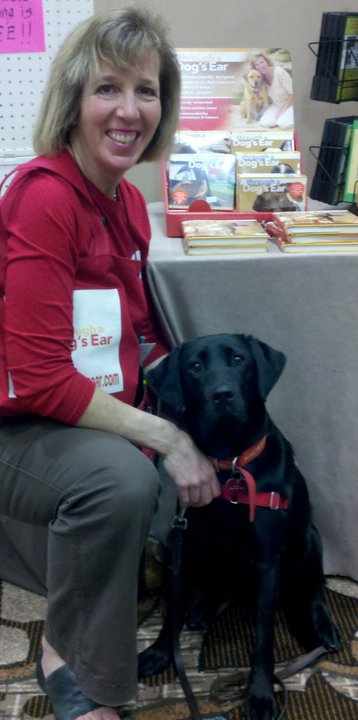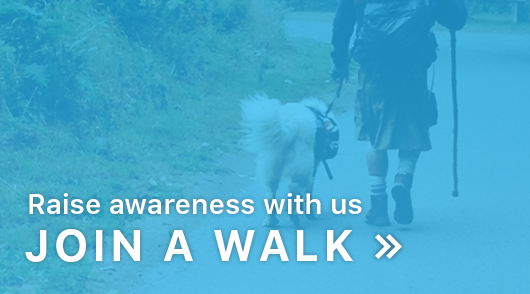 A while ago I had the good fortune to speak with Lisa Spector, co-founder and pianist of the Through a Dog’s Ear CD series. Lisa collaborates with sound researcher, music producer, and educator Joshua Leeds, and together they have created a series of music CDs that uses the sciences of psychoacoustics , entrainment , and bioacoustics to positively influence behavior in dogs. When I first discovered her work, I thought to myself, I wonder if this music would help dogs during their cancer treatments? I contacted her through Facebook and she was kind enough to grant me an interview.
A while ago I had the good fortune to speak with Lisa Spector, co-founder and pianist of the Through a Dog’s Ear CD series. Lisa collaborates with sound researcher, music producer, and educator Joshua Leeds, and together they have created a series of music CDs that uses the sciences of psychoacoustics , entrainment , and bioacoustics to positively influence behavior in dogs. When I first discovered her work, I thought to myself, I wonder if this music would help dogs during their cancer treatments? I contacted her through Facebook and she was kind enough to grant me an interview.
I first asked Lisa, who was classically trained at the celebrated Juilliard School of Music and now runs her own music school on the West Coast, how she got interested in psychoacoustics and its effect on dogs. She told me that some time ago she attended one of Joshua Leeds’ seminars and was taken with the practical applications of his teachings so much she started applying these principles to her own students, finding them very effective. She decided to attend another lecture, taking a puppy with her. At the time, she was also a volunteer puppy raiser for the Guide Dogs for the Blind. While in this second class, she wondered if the techniques Josh was teaching could be effective in calming dogs and relieving anxiety issues. She discussed the idea with him, and so began their collaboration.
I asked her what CD she would recommend as a ‘starter’ CD. She suggested that the Music to Calm Your Canine Companion (Volumes I, II, and III) would be a good place to start, calling this the “industrial strength calming” CD series. The classical piano music, slowed down and simplified to cause passive hearing rather than active listening, has been clinically tested on over 150 dogs. It’s been proven to calm dogs in shelters and the home environment as well. The music has also been shown to help with certain anxieties like separation anxiety, sound phobias (including fireworks and thunder storms), and even excitement when company is visiting.
The Driving Edition – Music to Calm Your Dog in the Car – is designed to relax your dog but at the same time help keep the driver alert. “This psychoacoustically designed music strikes the ideal balance of keeping you alert in the driver’s seat while soothing your dog’s nerves for a comfortable, pleasant journey.” This CD “includes Travel Prep — an additional 20 minutes of music to prepare especially anxious dogs for riding in the car. Also included are specific protocols that address three degrees of auto anxiety.”
Music for the Canine Household is a bit different and isn’t just solo piano but includes music performed by The Apollo Chamber Ensemble (piano, cello, oboe, English Horn), featuring Lisa as the pianist. This CD is not designed for use when the dog is home alone, as it is a little more complex with the addition of the other instruments in it as well, but is rather a little more stimulating. It’s still relaxing for the dog but is designed to be used when you’re around the house, active with your daily household routine, and will keep people awake.
I was curious about who decides on the pieces of music that will be used. She explained that this is a very collaborative effort between the two of them, and a part of the process she finds very rewarding. She and Joshua sit down with hours and hours and hours of music to choose from, and gradually narrow down the selections. If the music needs it, they will make acoustic changes to the work — changes that will slow the dog’s heart rate by simplifying the score — slowing the music, modifying it by taking out complex parts, etc. They don’t change the notes that are written but they might take a broken chord and turn it into a solid chord, for example. And they might also lower not only the tempo but the frequency, which also affects the canine heart rate. And while they make changes to some classical pieces, there are other pieces from which they pull sections, (movements from sonatas, for example), that suit the psychoacoustic needs for which they are striving.
Classical music by its nature is music that one generally engages in in an active listening way. The music is intricate, full, rich, and stimulating, and it takes conscious thought to interact with and appreciate it due to its elaborate qualities. While this may be fine for humans, what Lisa and Joshua have discovered is that by simplifying the music and taking it to its core tonal essence, it causes one (dog or human) to passively attend to the music. One is still influenced, but the mind and body respond by relaxing in sympathetic resonance to the slower pace and simpler melodies. This is the difference between active listening and passive hearing. And this is how their music may help your dogs.
Naturally, the subject of dogs with cancer came up and I asked Lisa if she’d given any thought to using their music with these dogs. She said this would definitely be something they would like to explore, and that many vets are currently using their CDs in their practices, pre-and-post surgery. She would like to see the music clinically tested in dogs with cancer to see if during treatments and/or post-treatments the dogs have a positive response, and she always welcomes anecdotal information. Users are welcome email her or to post their results to the Through a Dog’s Ear Facebook wall. Users are always writing to tell Lisa and Joshua about their own experiences. One boarding facility owner reported using the music to calm the dogs during a tornado. Another said that the music helped wild dogs counteract their aggression. The music is used in Grumpy Growler classes and trainers use it for reactive dog classes and also for fearful dogs. So the application for use with dogs with cancer has great potential as well.
How had she first heard about 2 Million Dogs? Lisa said her sister in Boston told her about the November 7th 2010 Boston Walk. About the time I contacted her, she also heard from Ginger, so it was a happy confluence of events that led us to one another. Generously, Through a Dogs’ Ear donated 100 samplers and 5 CD sets to the Boston Walk, as well as copies of Joshua’s book Through a Dog’s Ear , which he co-authored with Dr. Susan Wagner. There are many samples of their music on their website which are free to listen to.
Lisa reemphasized that while the CDs are designed for dogs, they’re good for people too. She laughed and said, “Unless you have a Border Collie, you’re going to be the one to turn on the iPod or CD” so it’s a good thing people enjoy the music too!
Both she and Joshua appreciate and welcome feedback, and she encourages people to write with their experiences. There is a place on the website to share your responses.
Lisa and Joshua, and Through a Dog’s Ear, parallel the interests of 2 Million Dogs in that our goals for bettering the life of our canine companions are uppermost in our work. If you use their CDs with your dogs, I encourage you to write them with your results.
For a wealth of information on the CDs, how the music is designed, and what psychoacoustics, entrainment, and bioacoustics are, and how they can benefit your dog and you, please visit their website. You may also write to Lisa at: Lisa@ThroughADogsEar.com
To see the work of Lisa Spector and Joshua Leeds, check out this February 22, 2008 CBS Early Show video.










